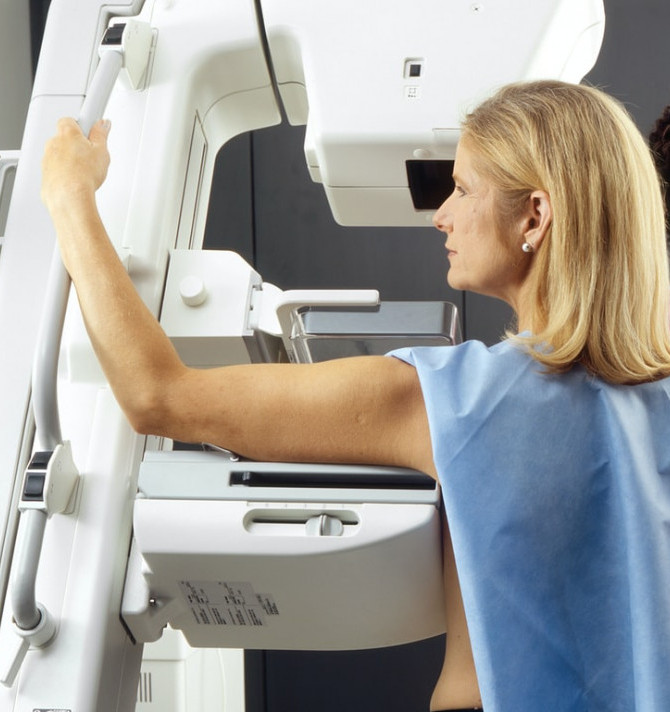Breast lumps occur quite frequently in breastfeeding moms and essentially all the lumps encountered during the postpartum period and during lactation are non-malignant in nature and resolve with the appropriate treatment. The common lumps moms are accustomed to are mastitis, breast abscess, galactocoele and blocked ducts. They are all harmless and resolve with treatment.
These lumps in the postpartum period also present with characteristic symptoms that helps to define them and classify them and one of the most important characteristic symptom you will experience with a non-malignant breast lump is pain.
When you notice a new lump in your breast and there is no associated pain it should send off alarm signals in your head and you should ensure you make an appointment with your doctor immediately to determine what it is.
Postpartum breast cancer (PPBC) also known as pregnancy associated breast cancer (PABC) is defined as cancer that is diagnosed during pregnancy or within one year of giving birth. PPBC affects roughly one in 1000 women and is most common in women over the age of 40. This propensity towards midlife makes PPBC a late and latter diagnosis in younger women with resultant reduced chances of survival.
It is a high risk under-recognised and under diagnosed ailment with an increased speed of metastasis as a result of the pregnancy and postpartum period that it presents.
Lactation and breastfeeding can make it difficult to detect cancer early in a breastfeeding mother therefore it is very necessary for you to report any changes in your breast early to your doctor. This also raises the importance of knowing your breast and their consistency and feel by regular self-examination of the breasts.
Types of Breast Lumps
Apart from the common lumps associated with breastfeeding like mastitis, breast abscess, blocked ducts and galactocoele, the breast can have other types of lumps which needs to be identified and classified as though they are not malignant, they could present the breastfeeding mother with unnecessary anxiety and tension.
Fibroadenosis
These are fibrous tissues in the breast that coalesce and feel hard and nodular on the breasts and can sometimes become tender. They are freely mobile and are called breast mouse on account of that mobility and is not attached to skin or underlying structures of the breast. They can also resolve spontaneously and are not cancerous.
Lipomas
Lipomas are fatty tissues that grow very slowly. They can be found in other body locations as well. They are soft, non tender and are not cancerous and arise as a result of spontaneous overgrowth of fat cells in the breast or any other body location.
Cysts
Cysts are fluid filled sacs that are found in the breasts. They are smooth and feel firm and non tender and can be moved around freely on the breasts and are not attached to the skin or underlying breast tissues. Cysts are benign in most cases but must be investigated as some can be early stage cancerous breast mass.
Haematomas
A haematoma is a collection of blood under the skin of the breast as a result of trauma or surgery on the breast. It is usually tender and the skin over the haematoma is discolored if the collection is beneath the skin. The source of the haematoma is usually identifiable so ruling out cancerous growth.
Duct Ectasia
Duct ectasia is usually as a result of a blockage of a duct on the nipple. This gets the nipple to turn inwards and this inverted nipple leads to the development of a lump underneath it. There may be occasional blood stained discharge from the nipple. Duct ectasia is common around 40 years and can be really scary but is not malignant.
How to Detect PPBC Early
Breast cancer can develop in any part of your breast. It can be big or small, it is mostly painless but can be painful and the cancer can coexist with other breast complaints like mastitis and can also coexist with other benign breast masses so do not be deceived by following a particular ideation about masses in the breast. Cancer of the breast can present in any form shape and size.
PPBC is almost always an aggressive tumor and late detection usually always ends up in fatality for the affected mom so early detection is the key to successful management of cancer of the breast especially postpartum.
Do not ignore any of the following symptoms and see your doctor for proper assessment once you notice the following
- A mass in your breast or armpit no matter the size especially if it is firm or hard
- Any change in size, shape feel of your breasts
- A mass that does not resolve in a week after treatment or comes back in the same place after treatment
- Dimpling, redness or puckering of the skin especially over a mass
- A change in position and shape of a nipple especially when it gets inverted into the breast
- A firm immobile mass that is either attached to skin or underlying structures or both
- A fast growing breast mass
- Discharge from either or both nipples, can sometimes be bloody discharge
- A rash around the nipple area
- Pain that is persistent in the breasts or the armpit
Diagnosis of PPBC
Diagnosis of postpartum breast cancer is made with a combination of physical examination and utilization of a combination of diagnostic equipment that entails utilization of mammogram or ultrasound or MRI that depicts the images of the mass within the breast.
This may be difficult for the radiologist to assess in a breastfeeding and lactating mom that cessation of lactation may be advised for some time before the assessment though this is not universally acceptable.
Biopsy involves removing a piece of the mass for pathological assessment. There are different kinds of biopsy and your doctor will determine which will be optimal for you taking into consideration that you are breastfeeding and the nature of the mass in question.
Management of PPBC
Management of women with postpartum breast cancer requires a multidisciplinary approach and the considerations should always be the patient first and then the cancer second.
Most patients with PPBC are young and hence are within the age range where recommendation for genetic counseling and testing is of importance even without a family history as an association exists between young age, family history of BRCA mutations and PABC.
Other patient related considerations in breast cancer and referrals for these should be in conjunction with the appropriate and primary treatment for the cancer.
Breast Cancer and Breastfeeding
Postpartum breast cancer occurs at a critical time for a woman and her new born baby that considerations about whether to continue breast feeding while undergoing treatment for the cancer or suspension of breast feeding till a later date becomes a paramount issue in the multidisciplinary approach to the care of the patient.
The issue of breastfeeding your baby will be determined by a variety of factors from the type of cancer diagnosis, the stage of the disease and the treatment options you and your doctor choose after careful considerations of your prognosis, side effects of treatment and the level of support both emotional and societal that you have.
Most patients who had a mastectomy can continue to breastfeed their baby before and after surgery from the unaffected breast
If you had chemotherapy, you will have to suspend breastfeeding as the powerful chemotherapeutic agents used can be expressed in breast milk with likely untoward effects on your baby.
If radiation therapy is the treatment of choice you may continue breastfeeding depending on the type of radiation therapy you are undergoing and baby can continue to breast feed from the unaffected breast
Breast Cancer and Family Planning
The issue surrounding breast cancer and family planning and the use of contraceptives is a factor that needs to be discussed earnestly with the patient as the spectrum of needs within this area are wide and individualized assessment is necessary to address it properly.
Breast cancer is one example of a hormonal mediated cancer and the use of family planning that contains the steroids estrogen and progesterone is contraindicated as it will worsen the prognosis for the patient.
Breast Cancer and Fertility Preservation
As the mode of treatment chosen for eradication of breast cancer has the potential to affect future fertility of a cancer patient, the issue of fertility preservation is a cause for concern for the patient and should be addressed as part of the protocol for holistic management of the patient
In the present time the options available for fertility preservation has actually widened to offer the patient a range of choices from embryo banking, egg banking, ovarian rest with goserelin during chemotherapy to ovarian transplantation later following successful treatment of the cancer.
Management of the Cancer Proper
As the mechanisms underlying the development of postpartum breast cancer and how to treat them to enhance improved survival remain under study, it is recommended that the treatment modalities should follow the same guidelines instituted for premenopausal breast cancer based on the staging and the biologic types and sub types of the tumor. This should be accomplished using the multidisciplinary approach to their management.
Conclusion
Breast lumps are a common finding in breastfeeding moms and they come in various shades with the majority resolving without a major incidence as they are benign growths.
Postpartum breast cancer however presents a different scenario starting with the difficulties it presents in diagnosis and on to the challenges of management as it presents in the postpartum with the baby in tow. The key to a successful eradication of postpartum breast cancer is early diagnosis. This is an aggressive cancer but you can comfortably handle it with a good outcome if the mother presents early and a multi disciplinary approach utilized in its management coupled with immense emotional support from the family and society.
Dr mawa
To your postnatal health and freediom
mypostnatalmanagement.com
Please if you have any questions, suggestions or experience you want to share with us kindly use the comments box below. It will be highly appreciated and promptly responded to.



